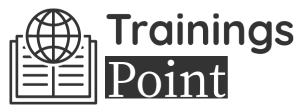Standard Operating Procedures (SOPs) are the basis for a large part of the day-to-day training that most pharmaceutical employees are required to perform. Still, it is not widely understood how the writing of a procedure can have a positive or negative impact on training or employee performance, and as a result, training often misses the mark or employees make mistakes that could have been avoided with better synchronization between the activities of the documentation and training groups.
WHY SHOULD YOU ATTEND?
This session is designed to assist learners with the following objectives:
- To improve the writing of SOPs for more effective training and reduction of errors
- To understand the regulatory implications of what is written in an SOP
- To learn the parameters of an effective SOP
- To distinguish a well-written SOP from a poorly written one
- To define processes better by effective interaction with the SOP process owner and/or author
- To integrate the SOP effectively into the position curricula of employees
- To explore the connection between SOPs and job performance, and measure retention of SOP content at the training stage
- To make better use of existing tools to evaluate the effectiveness of both SOPs and training
AREA COVERED
In this course, you will learn the vital connection between documentation and training, and how to maximize this connection to improve the quality of both SOPs and training, as well as job performance. This course is geared toward the pharmaceutical industry, particularly those areas which develop SOPs for the manufacturing or quality monitoring of pharmaceutical products, as well as Information Technology (IT).
The content will be especially beneficial for anyone who is an owner of a process, is responsible for writing or reviewing procedures, and/or manages training in a GMP environment. The course aims to provide practical information, which has already been used on the job effectively, and suggests similar actions that learners can apply to their job situations quickly.
LEARNING OBJECTIVES
- Regulatory requirements for SOPs
- Define the parameters of an effective SOP – How your foundation keeps subsequent steps from going awry
- Interact with the SOP process owner/author to improve the writing of procedures
- Translate the SOP into effective curriculum development and training execution
- Perform an ongoing assessment of the knowledge retention of learners for continuous improvement
- Review of learning objectives
WHO WILL BENEFIT?
- Documentation specialist
- Documentation manager
- Technical writer
- Trainer
- Training manager
- Quality Assurance specialist
- Quality Assurance manager
This session is designed to assist learners with the following objectives:
- To improve the writing of SOPs for more effective training and reduction of errors
- To understand the regulatory implications of what is written in an SOP
- To learn the parameters of an effective SOP
- To distinguish a well-written SOP from a poorly written one
- To define processes better by effective interaction with the SOP process owner and/or author
- To integrate the SOP effectively into the position curricula of employees
- To explore the connection between SOPs and job performance, and measure retention of SOP content at the training stage
- To make better use of existing tools to evaluate the effectiveness of both SOPs and training
In this course, you will learn the vital connection between documentation and training, and how to maximize this connection to improve the quality of both SOPs and training, as well as job performance. This course is geared toward the pharmaceutical industry, particularly those areas which develop SOPs for the manufacturing or quality monitoring of pharmaceutical products, as well as Information Technology (IT).
The content will be especially beneficial for anyone who is an owner of a process, is responsible for writing or reviewing procedures, and/or manages training in a GMP environment. The course aims to provide practical information, which has already been used on the job effectively, and suggests similar actions that learners can apply to their job situations quickly.
- Regulatory requirements for SOPs
- Define the parameters of an effective SOP – How your foundation keeps subsequent steps from going awry
- Interact with the SOP process owner/author to improve the writing of procedures
- Translate the SOP into effective curriculum development and training execution
- Perform an ongoing assessment of the knowledge retention of learners for continuous improvement
- Review of learning objectives
- Documentation specialist
- Documentation manager
- Technical writer
- Trainer
- Training manager
- Quality Assurance specialist
- Quality Assurance manager
Speaker Profile
 Michael Esposito
Michael Esposito
Michael Esposito has over 30 years’ experience in the pharmaceutical industry and 17 years’ experience in GMP training and document management. He has worked for Wyeth Pharmaceuticals, Pfizer, and Johnson & Johnson's Consumer Healthcare Division in a variety of areas including Packaging, project administration, Quality Assurance, Government Contracts, translations, systems training, and international operations. He collaborated in the development and implementation of the training portion of the Consent Decree workplan for Johnson & Johnson Consumer Healthcare and revised their introductory GMP course. He is a member of the training organizations GMP Training Educators Association and Association for GXP Excellence and …
Upcoming Webinars

How to Write Contracts for Procurement Professionals

How to Deal with Employees Who Love to Argue and Debate Eve…

Project Management for administrative professionals


Sunshine Act Reporting - Clarification for Clinical Research

Onboarding Best Practices for 2025: Proven Strategies to Po…

Transform Data into Insights: A Beginners Guide to Excel Pi…

Reprogramming your mind for Corporate Excellence: 4 Steps t…

Terminating Toxicity: Strategies For Leaders To Confidently…

ChatGPT and Project Management: Leveraging AI for Project M…

Uplifting the Credibility of HR: How to Build the Credibili…

How to Manage the Legal Landmine of the FMLA, ADA and Worke…

How to Write Effective Audit Observations: The Principles f…


Strategic Interviewing & Selection: Getting the Right Talen…


Onboarding Best Practices for Millennial and All Employees

Performance of Root Cause Analysis, CAPA, and Effectiveness…

Bridging Generational Divides in the Workplace


Emotional Intelligence: Mastering the Emotions of Great Lea…

FDA Audit Best Practices - Do's and Don'ts

2-Hour Virtual Seminar on How to Conduct an Internal Harass…

Accounting For Non Accountants : Debit, Credits And Financi…

Successful Strategies for FDA Expedited Pathways for Your D…

Regulation update Q1 2025: New and Proposed Regulations for…

Unlock Employee Loyalty: Stay Interviews Will Keep Them Eng…

Pay Transparency in Action: Strategies for Building Trust a…

Designing Employee Experiences to Build a Culture of Compli…


Reinvent Your Business with the Power of AI

Excel Lookup Functions: VLOOKUP, HLOOKUP, and XLOOKUP Made …

Developing and Implementing Quality Culture in the Organiza…

Tips and Techniques for Conducting an Effective Fraud Risk …

Break Free from Toxicity: Reclaim Your Power and Peace


Physician Employment Agreements: Problem Areas that can be …

Measure the Effectiveness of Compliance Programs by Engagin…

FDA Regulation of Artificial Intelligence/ Machine Learning

Quality Management Systems and Data Integrity

Implementing an Effective Human Error Reduction Program

Navigating 2025 Employment Laws: What Every Employer Needs …

Cleaning Data without Complex Functions - A Course for Data…


Succession Plan for 2025: It's Not Just for Emergencies - I…

Employers Should Prepare for Immigration Raids in 2025! Thi…

Managing Toxic Employees: Strategies For Leaders To Effecti…


Using High-Performance Coaching for Managers to Address Per…

